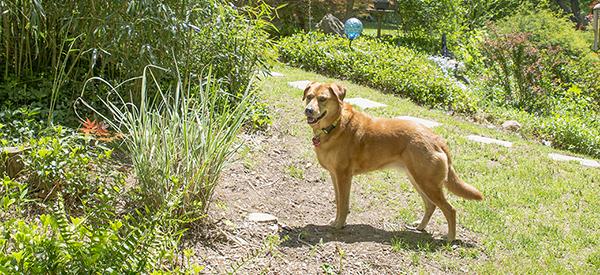
If You Have a Pet, Get Rid Of These Plants Immediately!
Plants, flowers, and herbs can make such a wonderful addition to any house or garden. They can brighten up even the dullest of environments, provide mood and concentration-boosting properties, medicinal uses, and help clean indoor air by absorbing toxins. There aren’t many negative reasons for keeping plants—but if you have a pet, get rid of these plants immediately!
Many common household plants that seem harmless are actually highly toxic to animals and should be avoided at all costs. What looks like a beautiful decoration could pose a serious risk to your furry friends, causing anything from mild discomfort to severe poisoning or even organ failure.
Chamomile
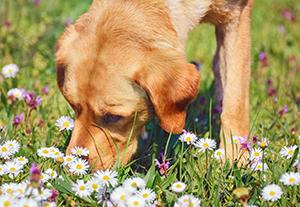 Chamomile is one of the most ancient herbs known to man and is regularly used for medicinal purposes to benefit a wide range of health issues. It is most commonly made into a hot drink as a supplement that can help with sleep, relaxation, and reducing inflammation. As relaxing and comforting as Chamomile may be to humans, do not under any circumstances let your cat, dog, or horse anywhere near this herb.
Chamomile is one of the most ancient herbs known to man and is regularly used for medicinal purposes to benefit a wide range of health issues. It is most commonly made into a hot drink as a supplement that can help with sleep, relaxation, and reducing inflammation. As relaxing and comforting as Chamomile may be to humans, do not under any circumstances let your cat, dog, or horse anywhere near this herb.
It contains a variety of potentially harmful substances such as tannic acid, bisabolol, chamazulene, and anthemic acid. It is known to be very toxic in large doses, in particular for the feline friends in our life. Anorexia, diarrhea vomiting, and contact dermatitis are all high possibilities from the ingestion of Chamomile.
Aloe Vera
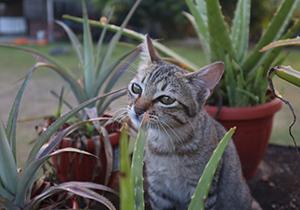 Aloe Vera is a very common house plant that is part of the Aloaceae family. These succulent, easy to maintain plants make for a great indoor companion. Unfortunately, they are a big no-no for the furry companions in our lives and you should avoid these at all costs if you own a cat or dog. Aloe Vera is commonly used in medication to assist with bowel movements. If ingested by cats or dogs it can result in excessive diarrhea and vomiting as well as other clinical signs such as changes in the color of urine, depression, and anorexia.
Aloe Vera is a very common house plant that is part of the Aloaceae family. These succulent, easy to maintain plants make for a great indoor companion. Unfortunately, they are a big no-no for the furry companions in our lives and you should avoid these at all costs if you own a cat or dog. Aloe Vera is commonly used in medication to assist with bowel movements. If ingested by cats or dogs it can result in excessive diarrhea and vomiting as well as other clinical signs such as changes in the color of urine, depression, and anorexia.
For our canine friends in particular Aloe Vera is known to lower their blood sugar levels and in some cases can cause coma and death. These plants are best avoided in the home for the health and wellbeing of your pets or at the very least place well out of reach of our non-human companions.
Lavender
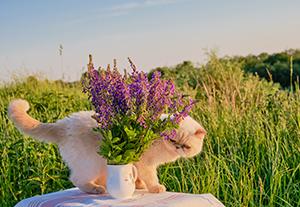 Lavender is a beautiful flowering plant from the mint family and is well known for its distinctive sweet scent. It is often made into oils and used in aromatherapy promoting calmness and wellness. So, is Lavender safe for animals? This is not necessarily a clear cut answer. It is fair to say that Lavender is not the most toxic plant on our list, but it does contain a small amount of a potentially toxic compound called ‘linalool’.
Lavender is a beautiful flowering plant from the mint family and is well known for its distinctive sweet scent. It is often made into oils and used in aromatherapy promoting calmness and wellness. So, is Lavender safe for animals? This is not necessarily a clear cut answer. It is fair to say that Lavender is not the most toxic plant on our list, but it does contain a small amount of a potentially toxic compound called ‘linalool’.
If your dog were to ingest a small amount of this compound the side effects are likely to be very minimal however if ingested in large doses poisoning could occur. Common side effects for dogs, in particular, are an inability to defecate, fever, reduced appetite, vomiting, and swollen abdomen. Although lavender has a much lower toxicity level than most plants on our list we think it is just not worth taking the risk.
St John’s Wort
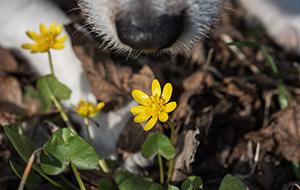 St John’s Wort is a popular herb that is sometimes known as the ‘Klamath Weed’. It is a member of the Clusiaceae family of plants and is most commonly used medically as a dietary supplement to help treat depression. You can also often find St John’s Wart included in topical treatments as it is a fantastic solution for healing wounds. If you plan on keeping your cat or dog safe and living a healthy, fruitful life you will want to ensure that they do not have access to this herb.
St John’s Wort is a popular herb that is sometimes known as the ‘Klamath Weed’. It is a member of the Clusiaceae family of plants and is most commonly used medically as a dietary supplement to help treat depression. You can also often find St John’s Wart included in topical treatments as it is a fantastic solution for healing wounds. If you plan on keeping your cat or dog safe and living a healthy, fruitful life you will want to ensure that they do not have access to this herb.
Cats and dogs love to get their noses into absolutely everything and St John’s Wart has proven to be toxic, in particular to dogs. If ingested by your dog the toxicity levels in their system can cause sun sensitivity as well as dermatitis. The presence of ‘Hypericin’ in this herb is the main cause of these symptoms and you will want to ensure your dog stays well away.
Daffodils
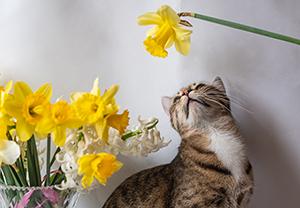 There is no doubt about it, Daffodils can really illuminate the home and garden. They are a well-liked flower that is particularly popular with amateur gardeners and are grown in most regions of North America. That being said, these are not your pet’s best friend by any means! Daffodils contain an alkaloid called ‘Lycorine’ which has strong properties that result in vomiting.
There is no doubt about it, Daffodils can really illuminate the home and garden. They are a well-liked flower that is particularly popular with amateur gardeners and are grown in most regions of North America. That being said, these are not your pet’s best friend by any means! Daffodils contain an alkaloid called ‘Lycorine’ which has strong properties that result in vomiting.
These are particularly dangerous for dogs and the ingestion of the flower, plant, and bulb can cause not only severe vomiting but abdominal pain, cardiac arrhythmias, and respiratory depression. If you have pets in the home you will want to avoid these at all costs or keep them as far away as possible from those tiny paws and curious noses.
Tulips and Hyacinths
Tulips and Hyacinths make such a pretty combination that they are frequently seen paired together in gardens and indoor displays. As impressive as these plants can be, they are most definitely ones you must keep away from your pets. They are toxic to cats, dogs, rabbits and severe poisoning for all is very possible. Tulips and Hyacinths contain allergenic lactones (alkaloids) that can be harmful to pets. These compounds are concentrated within the bulb structure of the plant rather than the leaves or flowers.
Dogs are particularly at risk since they are known to dig up freshly planted bulbs frequently for fun. Once they have the bulb in their possession they can’t help but have a little munch. Usual signs of ingestion include vomiting, drooling, diarrhea, and tissue irritation surrounding the mouth and esophagus. Difficulty breathing, increased heart rate, and changes in respiration are common in more severe levels of intoxication.
Yarrow
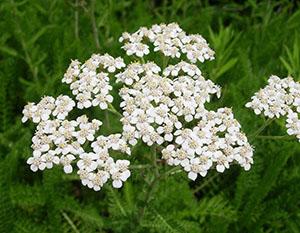
Yarrow, also called milfoil, comes from the Asteraceae family and contains poisonous toxins harmful to a dog’s health. It can grow up to three feet high.
The leaves appear fern-like and spiral around the stem. The flowers are usually white but can sometimes be pink. Yarrow grows in fields and along roadsides but is also planted in gardens for its medicinal qualities.
The plant has herbal benefits for humans when used in regulated amounts. However, if a dog ingests a large quantity, it can cause serious illness requiring veterinary care.
Toxic effects include increased urination, vomiting, diarrhea, and dermatitis
Lilies
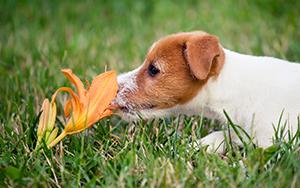
Lilies are a very popular group of flowering plants that come in an array of beautiful colors. They can really add a splash of art to the home.
As appealing as this might be, if you have pets, these flowers should be avoided like the plague! The entire lily plant is highly toxic to cats, including the stems, leaves, pollen, and the flower itself.
Even if your cat nibbles on the leaves or drinks water from the vase, the consequences can be lethal. Your cat will likely develop kidney disease within about three days.
Felines are very prone to kidney diseases, and the outcome is usually a bleak one
Purslane
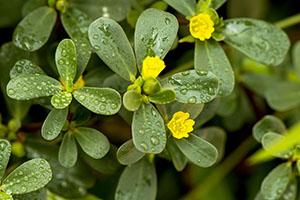
Lastly, but certainly not least, we have Purslane. This is often referred to as a common garden weed. However, it is edible to humans and is actually much more nutritious than most common crops.
It is packed full of Omega-3 fatty acids, beta-carotene, and vitamin E. Purslane is regularly used as a natural remedy for sleep issues such as insomnia.
As wonderful as this herb sounds for human consumption, it is dangerous for pets. You should not allow them to get anywhere near it.
Purslane contains soluble calcium oxalates which are highly toxic to dogs, cats, and horses. If you own cattle or sheep it is also a wise idea to remove this herb from their reach. It is just not worth taking that risk.
You may also like:
 If You See This Plant, Whatever You Do Don’t Touch It!
If You See This Plant, Whatever You Do Don’t Touch It!
How to Make A Self-Sufficient Backyard on 1/4 of an Acre (Video)
7 Backyard Poisonous Plants That You Can Use as Medicine


I believe only the lavender grosso is toxic, most animals will self select what they need. Some of the plants that are dried are fine to use like chamomile, yarrow, we also use aloe gel as a base carrier for essential oils. I think you have good information yet I do not want people to be scared off if they want to learn more about animal aromatics. Caroline Ingraham is the leading pioneer in Zoopharmycognsy and she has done decades of research with the use of these herbs with animals. Thank you
Director of Animal Aromatics Science at Northwest School of Animal massage.
Hi Joan,
Thank you so much for your comment.
Your feedback and knowledge are valuable to us.
Indeed if the plants are dried or used for natural remedies, they are safe.
God bless!
Totally agree I have all these plants growing on my farm have done for 30 years,why would anyone think my animals would wont to chew on any of them, silly information.
My big puppy chews off anything in my yard. She will pull plants out of the ground and trim bushes and hunt for broke off limbs to chew on. I have a couple of these plants you mention in my yard, thanks for all the info.
Very good to know! Thank you
Hi Charlene,
Thank you for your comment.
We are glad you find this article useful.
God bless!
This is the most unusual article. Your info is wonderful. In this case, I agree with others commenting, I’ve not heard of an animal that eats plants that are dangerous for it. Unlike humans, most animals have not forgotten their innate intelligence.
Unfortunately the vet ER sees animals that somehow bypass what is best for them and ingest all kinds of things, many of which r toxic to them. Maybe their sensitivity has dissipated with breeding habits
Very useful article, thank you Nicole! The only thing is it’s not St.Jones plant on the picture. The yellow flower looks mostly like Marsh Marygolds. St.Jones has different leaves and stems, they are more long and thin, shaped like petals. I know that because it’s one of my favourite plant, I make herbal tea out of it and it’s been used in our family for generations 🙂 By the way, Marsh Marygolds are poisonous as well.
Hi Irina,
Thank you for sharing this with us.
We are really glad you find this article useful and we will make the appropriate changes in the article.
God bless,
Claude
Thanks so much for the information. I would love to find a book with all plants that are toxic to cats and dogs along with symptoms and first aid.
Apparently not all animals will avoid them or my vet would not have made a special point of warning me about lilies.
Your advice is never silly or pointless.
Hi Pam,
Thank you for your kind words.
We really appreciate it.
God bless!
I had a cat that ‘chewed’ on some of a lilly I had in my house. He passed away shortly after. I’ve seen my cats ‘chew’ on leaves on several of my house plants. It isn’t uncommon. Just because you have never seen an animal doing something with your own eyes, doesn’t mean it doesn’t happen. I suspect if you talked to several veterinarians, at least one of them has encountered a dog or cat that has ‘chewed’ on the leaves of one of the said plants. It happened to my cat. This is a great article that is meant to inform not to scare. Thank you Dr. Apelian.
Hi Tammy,
Thank you for your comment and for sharing this with us.
We really appreciate it.
We are sorry to hear about your cat.
God bless,
Claude
I have never experienced so much unfavorable criticism and judgment passed on the merits of everything Nicole is kind enough to share with us on this site. Thank you, Nicole for your hard work and caring. I purchased your book, ‘The Lost Book Of Herbal Remedies’, and love it. Also watched you on ‘Alone’, the second episode televised. Your survival skills were awesome. What an honor to be on the show.
Hi Pamela,
Thank you for purchasing “The Lost Book of Herbal Remedies” .
We are glad to hear that you love the book and the show.
We really appreciate your kind words.
God bless!
. My dog Dixie ate beechnut tree leaves and Rose of Sharon leaves. Almost killed her. Good thing I had Nationwide Pet insurance, she stayed iin hospital 2 days.
https://morningchores.com/plants-poisonous-to-dogs/#:~:text=%20Poisonous%20Plants%20%201%20Aloe.%20Believe%20it,holly%20contains%20saponins%2C%20which%20cause%20vomiting…%20More%20
Hi Sly,
Thank you for sharing this experience with us.
I am sorry to hear that your dog Dixie ended up in the hospital. I hope everything is ok now.
God bless!
hi, thanks for the article and the warnings, they are very valuable. I sent it to a group of friends who are into growing nedicinal herbs. I just wanted to say the photo you picked up for st john’s wort is not st john’s wort but ranunculus. please check it and replace it if possible. all the best, melda
I am confused as to why you would publish recipe to make a flea and tick repellant with chamomile and in this article say that it is toxic.
I also wonder the same thing?
I was wondering the same thing as I came to this article from a link at the bottom of that article where it says spray camomile tea all over your dog every 1-2 days as a natural flea repellent.
I wanted to buy: “How to Make A Self-Sufficient Backyard on 1/4 of an Acre “, a physical book, and they have only the US option. I guess all the offers you have do not apply to readers elsewhere.
Thank you for your wonderful article. We have a cat, Thomas, who has PICA… he will eat any and everything he finds on the floor or in his line of interest… leaves, string, Christmas tinsel, bugs…. When he has a BM it often looks like a “string of christmas lights” with pieces and bits of whatever he has munched on connecting bits of BM together with string, bits of leaves, string etc.. We have had to Thomas-proof” the house to avoid his having to be rushed to the Vet with an intestinal emergency. He LOVES munching on plants, leaves, stems, flowers etc. so we have banned indoor plants from our home because of this. Not ALL cats are savvy enough to stay away from plants that are not good enough to take a taste of…
I have just been reading one of your articles that says using Camille flowers for a flea repellent is good. Then I read another of your articles that says don’t let your pets near camomile flowers. I’m confused. 🤔
Hi Barbara,
Thank you so much for your message.
You can use chamomile flowers next to your pets, however, they should be used in moderation.
Chamomile is often considered safe for pets when used in moderation and proper forms.
However, it’s important to exercise caution and consult with a veterinarian before introducing any new herbs or substances into your pet’s environment or diet.
Chamomile is sometimes used in herbal remedies for pets, particularly for its calming and anti-inflammatory properties. It can be used in various forms, such as herbal teas, essential oils, and extracts. Here are a few things to keep in mind:
In summary, chamomile can be used near pets in certain forms and under the guidance of a veterinarian. Always prioritize your pet’s safety and consult with a professional before introducing any new herbs or substances into their environment or diet.
We wish you the best of health!